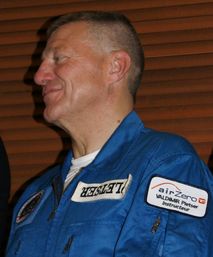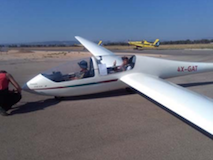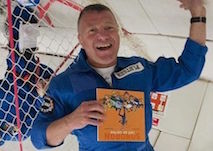Glider Parabolic Flights for Microgravity ExperimentsVladimir Pletser is the one of most experienced professionals worldwide in parabolic flights. He has flown on parabolic flights in 12 different types of aircraft, and has experienced more than 7,300 parabolas, representing a total of 39h18min of weightlessness time, equivalent to 26.2 low earth orbits, and totals of 52min of Martian and 47min30s of Lunar gravities.
The 12 airplanes flown in are the NASA KC135/930, KC-135/931, and DC-9/30; the CNES and ESA Airbus A300 ZERO-G and Airbus A310 ZERO-G; the CNES Caravelle; the Russian Ilyushin IL-76 MDK; the Canadian Space Agency Falcon 20; the Dutch NLR Cessna Citation II; a Belgian Air Force Fouga Magister; an Austrian Short Skyvan; and an Israeli Grob G-103 Twin II glider. Aircraft parabolic flights are widely used to create short periods of microgravity that can be then used for scientific and technology research, experiment rehearsal for space missions, and astronaut training before space flights. Gliders can be used as a way of conducting a low-cost parabolic flight. A glider parabolic flight campaign was conducted in 2016 in Israel with a Grob G-103 Twin II glider, for pedagogical and simple physiological experiments of participants of the International Space University's (ISU) Space Studies Programme (SSP16) at Technion, Haifa. Vladimir Pletser in conjunction with the InnovaSpace team offers a glider parabolic flight for educational experiments designed by schools or universities. The flight can be preceded by lectures and training regarding parabolic flight experiments and human space physiology. |


